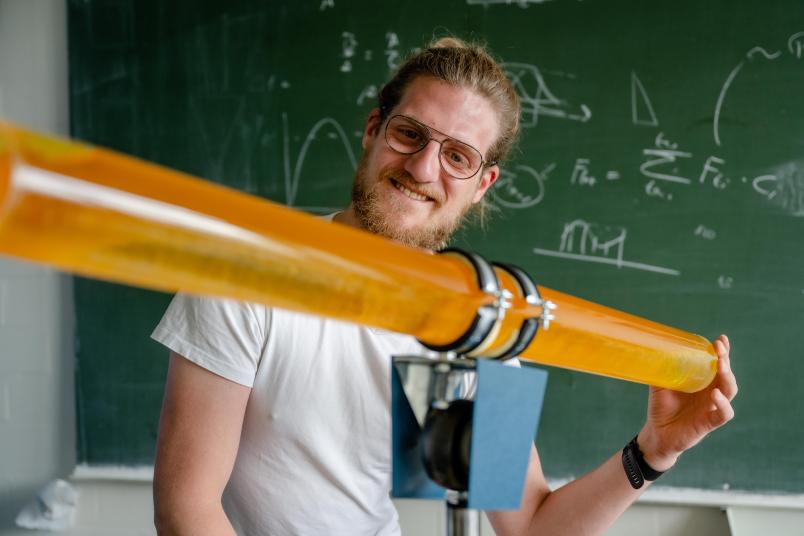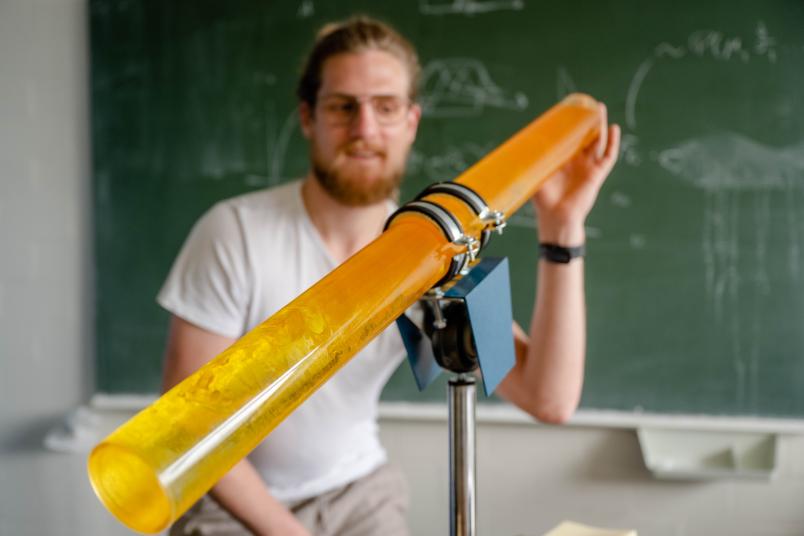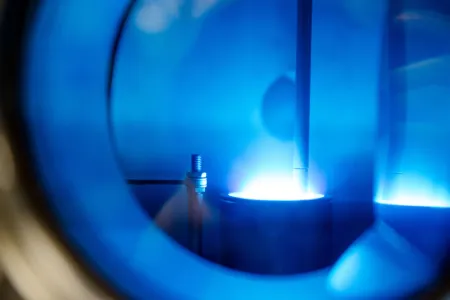
Our universe
Exhibit aboard the MS Wissenschaft explains turbulence in space
The exhibit was devised by Marcel Schroller, an industrial mechanic pursuing his doctorate in physics. While he had a lot of fun building it, it also meant he had to spend many hours afterwards cleaning his office.
On 9 May 2023, the exhibition ship MS Wissenschaft set sail for another voyage across Germany. The focus this year was the universe itself. An exhibit made by Bochum-based astrophysicists under the auspices of Professor Julia Tjus is also on board. It explains how certain turbulences are created, which we’ve observed in clouds and on the surface of Jupiter, and which are also present in other cosmic regions. These so-called Kelvin-Helmholtz instabilities occur when two liquids or gases flow past each other at different velocities.
In order to make the turbulence visible with an exhibit, a prototype was developed in the Collaborative Research Centre 1491 “Cosmic interacting matters” (SFB 1491). It won over the organisers at the MS Wissenschaft straight away. Marcel Schroller, a doctoral student at the SFB, built the exhibit. It’s actually quite a simple construction – a pivoting glass tube filled with oil and water. It was no coincidence that Schroller was chosen to design the structure: “Before I took up my PhD degree, I qualified as an industrial mechanic,” he explains. And while his technical skills were top-notch, building the exhibit wasn’t an easy task: that’s because supply chain bottlenecks for some materials still persisted, even though the construction phase didn’t start until after the coronavirus pandemic. An example was the Plexiglas tube into which he wanted to fill the water-oil mixture.
Test requires much clean-up
“The glassblowing department at the Faculty of Chemistry helped me out and supplied a glass tube at short notice,” says Schroller. This enabled him to test his exhibit without the final components – which, unfortunately, had some serious consequences. “The glass tube broke and I found myself with four litres of oil splattered across my office,” he recalls. “It took a lot of effort to get rid of it.”

Still, at the end of the day, the effort was worth it. The exhibit is finished and will now spend several months providing visitors to the MS Wissenschaft with insights into a phenomenon the understanding of which is crucial for the researchers at Collaborative Research Centre 1491. The researchers involved in the network headed by spokesperson Julia Tjus are looking for the sources of cosmic radiation. While it’s true that cosmic radiation can be found everywhere in the universe and is constantly pelting down on Earth, we don’t know where it comes from. Astrophysicists measure the cosmic radiation arriving on Earth and try to deduce its source. Plasma instabilities, such as those first formulated by Kelvin and Helmholtz, are important to consider in order to answer questions about the origin of cosmic rays.
